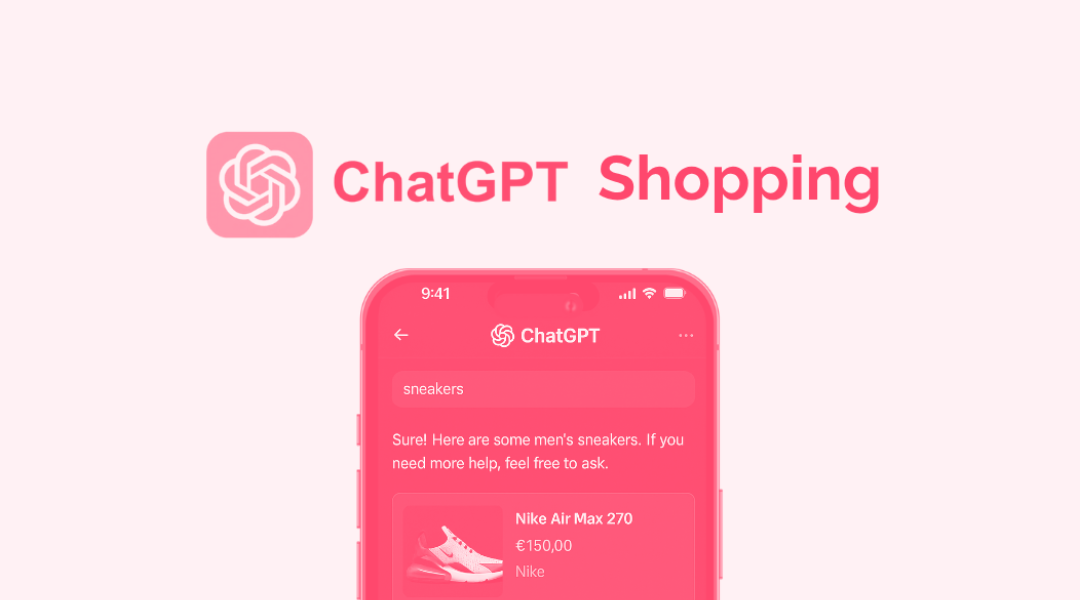ChatGPT Shopping: when artificial intelligence becomes your new shopping assistant
For years, eCommerce has been in a constant process of optimization: faster stores, more segmented ads, more precise funnels, and automations that...
Plan, activate and control media to hit targets with precision.
Turn data into smart decisions with advanced analytics and modeling.
Efficiency, governance and scale for agencies and teams.
![[Ebook] SEO + AI: eBook to Master AI Overviews and GEO](https://www.adsmurai.com/hubfs/MKT%20-%202025/WEB/Resources%20-%20Banners/HeaderEN_Ebook_SEO+AI.png)
[Ebook] SEO + AI: eBook to Master AI Overviews and GEO
Learn how to structure and distribute your content so generative models can understand it, trust it, and reuse it in their answers. A practical guide to compete and appear in AI Overviews and AI-powered assistants.
Discover more
In recent years, the way we discover and purchase products has changed radically. We’ve moved from browsing physical catalogs to scrolling through endless marketplaces. From comparing prices on Google Shopping to getting recommendations on TikTok. And now, in 2025, we’re entering a new era: conversational shopping powered by artificial intelligence.
At the heart of this revolution is ChatGPT Shopping, OpenAI’s new feature that transforms how we interact with products and online stores. An experience where you don’t need to know what you’re looking for—you just ask.
And yes, this goes far beyond a traditional comparator. We’ll explain everything.
TABLE OF CONTENTS
Launched by OpenAI at the end of April 2025, ChatGPT Shopping is a feature integrated into ChatGPT (available to Plus users with GPT-4o) that allows users to discover products and receive personalized recommendations directly within the ChatGPT interface.
When a user makes a purchase-intent query, such as: "What laptop do you recommend for under €1000?", ChatGPT Shopping returns a list of relevant products, detailing key features of each one and providing direct links to buy.

ChatGPT Shopping introduces a new way for consumers to discover products interacting directly with an AI that understands their needs in real time.
To make sure your products show up in ChatGPT Shopping, it’s crucial to have a well-structured catalog, with clear descriptions and up-to-date data.
The AI interprets user needs in real time and adjusts its responses to match the specific things the shopper is looking for.
ChatGPT Shopping marks the beginning of a new way to interact with products online. It’s no longer just about having a good website, a solid Performance Max campaign, or a catalog in Google Merchant Center. Now, it’s about being present and understandable to a conversational AI.
Here’s a clear roadmap to get you started:
AI can only recommend what it understands.
If you sell through Shopify, Klarna or any other platform integrated with ChatGPT, you’ve already got a head start. But to maximize your chances, your catalog needs to be spotless:

🧠 Remember: ChatGPT doesn’t search by keywords it searches by meaning.
“I’m looking for a waterproof jacket that doesn’t look like I’m going hiking.”
Would your product description respond to that?
Saying your product is “waterproof and versatile” isn’t enough. AI needs context-rich content to interpret your value. We recommend:
It’s not the sexiest job, but it’s crucial. Your feed format must meet technical standards so ChatGPT can understand and recommend it properly:
💡 If you’re already running dynamic catalog campaigns on Meta or Google, you probably have a good part of this covered.
Ask yourself the following:
📌 Example: if you sell a floor lamp, don’t just say it has “adjustable LED lighting.” Add:
“Perfect for creating a cozy atmosphere without taking up much space. Ideal for studios, small living rooms, or reading corners.”
That’s the kind of content the AI understands and matches to real-world questions.
There’s no open system yet like Google Merchant Center to upload products directly into ChatGPT Shopping, but you can:
There’s no native analytics (yet) for ChatGPT Shopping at least not public but you can start identifying patterns:
Add a tracking parameter or tag to the links that appear in Klarna or Shopify so you can better understand where that traffic might be coming from.
That’s okay. But don’t fall asleep on it.
This isn’t a trend it’s a transformation in how we discover products. Today, it’s a feature inside ChatGPT Plus. Tomorrow, it will be in phones, voice assistants, smart glasses, and even in your car.
The sooner you prepare, the greater competitive advantage you'll have when this becomes a mainstream channel.
ChatGPT Shopping isn’t just a novelty feature. It’s a loud signal of where ecommerce is headed: fewer clicks, more context. Less direct search, more intelligent conversation.![]()
And in this new terrain, the rules change: people discover products based on affinity, not bidding. They decide based on contextual relevance, not ad interruption.
For brands, this is both an opportunity and a challenge: How do you know if you’re present in those conversations? How can you measure if your brand is being considered when AI recommends products?
This is where a solution like Adsmurai’s Brand Trackers comes in.
With our Brand Tracking system, you can:
At Adsmurai, we don’t just help you adapt your strategy to conversational commerce. We give you the tools to measure its real impact on your brand.
.png)
For years, eCommerce has been in a constant process of optimization: faster stores, more segmented ads, more precise funnels, and automations that...

September is not just back to school: it’s the return to routine, recurring expenses, and new goals. While brands compete for attention in a...

Instagram Shopping presents itself as an innovation for brands when it comes to establishing dialogue with users, thus helping in the different...